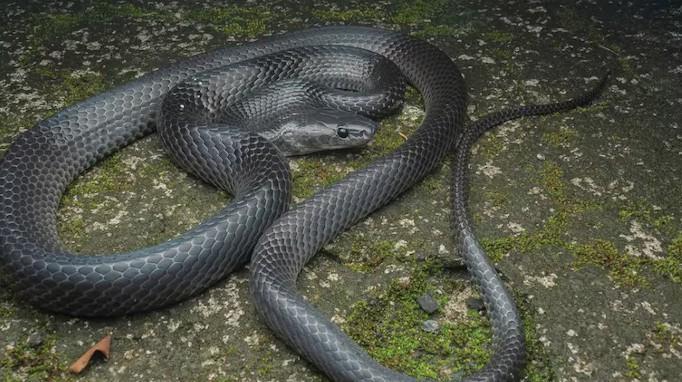
New Wolf Snake Found in Great Nicobar Named After Steve Irwin
The world of reptiles has just gotten a little more exciting with the discovery of a new species of wolf snake on Great Nicobar Island. The species, named Lycodon irwini, has been identified by scientists who have chosen to honor the late wildlife enthusiast and conservationist, Steve Irwin. This slender, bluish-black snake is a remarkable find, and its discovery has shed new light on the biodiversity of the region.
According to reports, the Lycodon irwini is a relatively small species, reaching lengths of up to 1.2 meters. Despite its modest size, the snake’s discovery has sent shockwaves through the scientific community, with many hailing it as a significant find. The species is believed to be confined to Great Nicobar Island, which is part of the Nicobar Islands archipelago in the eastern Indian Ocean.
The discovery of the Lycodon irwini is a testament to the rich biodiversity of the region. The Nicobar Islands are known for their unique and endemic species, many of which are found nowhere else on the planet. The islands’ remote location and limited accessibility have helped to preserve the region’s natural habitats, making it a haven for scientists and researchers.
However, the discovery of the Lycodon irwini has also raised concerns about the species’ conservation status. With only four confirmed records, the species is considered to be rare, and its population is likely to be small. The main threat to the species’ survival is habitat destruction, which is a result of development activities on the island. The construction of roads, buildings, and other infrastructure has led to the clearing of forests, which are the snake’s natural habitat.
The scientists who discovered the Lycodon irwini have recommended that the species be listed as Endangered on the IUCN Red List. This designation would provide the species with international protection and recognition, highlighting the need for conservation efforts to protect its habitat. The Indian government has also been urged to take steps to protect the species and its habitat, including the creation of protected areas and the implementation of sustainable development practices.
The naming of the species after Steve Irwin is a fitting tribute to the late wildlife enthusiast. Irwin, who was known for his passion for wildlife conservation, would have been thrilled to know that a new species had been discovered and named in his honor. The Lycodon irwini is a reminder of the importance of conservation and the need to protect our planet’s biodiversity.
The discovery of the Lycodon irwini is also a reminder of the importance of scientific research and exploration. The scientists who discovered the species have demonstrated the value of dedication and hard work in the pursuit of knowledge. Their discovery has expanded our understanding of the natural world and has highlighted the need for continued research and conservation efforts.
In conclusion, the discovery of the Lycodon irwini is a significant find that highlights the importance of conservation and biodiversity. The species’ unique characteristics and limited range make it a fascinating subject for study, and its discovery has shed new light on the natural world. As we continue to learn more about the Lycodon irwini, we are reminded of the importance of protecting our planet’s precious biodiversity and preserving the natural habitats that support it.
The Lycodon irwini is a remarkable species that deserves our attention and protection. Its discovery is a testament to the power of scientific research and exploration, and it serves as a reminder of the importance of conservation and sustainability. As we move forward, it is essential that we prioritize the protection of our planet’s biodiversity and take steps to preserve the natural habitats that support species like the Lycodon irwini.
For now, the Lycodon irwini remains a rare and elusive species, known only to a handful of scientists and researchers. However, as we continue to learn more about this remarkable snake, we may uncover new insights into its behavior, habitat, and population dynamics. The discovery of the Lycodon irwini is a significant find, and it has the potential to inspire new generations of scientists, researchers, and conservationists.
As we look to the future, it is essential that we prioritize the protection of our planet’s biodiversity and take steps to preserve the natural habitats that support species like the Lycodon irwini. The discovery of this remarkable snake is a reminder of the importance of conservation and sustainability, and it serves as a call to action for all of us to play a role in protecting our planet’s precious biodiversity.



